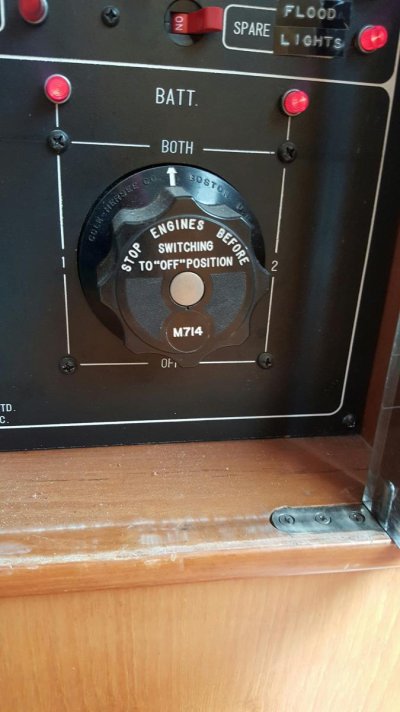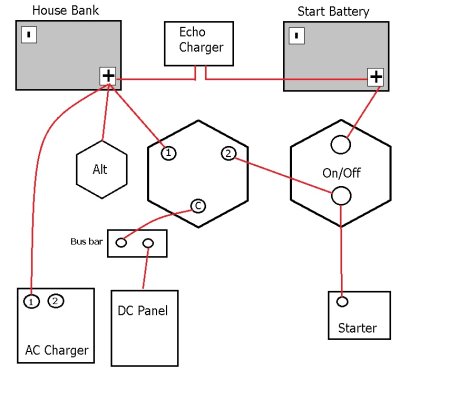OK, I have been around boating for a number of years and this is the first boat I have owned with a battery switch. I don't quit understand the purpose of it.
Here is what I do know:
- There is a #1 and #2 side. Each side is connected to a different battery bank. I have 2 banks with golf cart batteries.
- I know not to turn the switch while the engines are running.
- I keep the switch on "both"
So fill me in on the rest I am missing.......

Britannia makes a good point. Most sailboat setups as they come from the factory have a 1/2/Both/Off switch. I imagine that many of the smaller powerboats are the same. In most cases, they are wired so that the switch selects both the battery to be used, but also which battery is to be charged. Take a look at your wiring to be sure. On the 1/2/All switch there are three posts, a #1, #2, and common. If your alternator output is going to the common post, then that switch determines which bank is being charged by your alternator.
Down the road, you may want to consider a setup where you have a large house bank and a smaller start battery, much as Britannia described. If your alternator output is connected to your 1/2/Both switch, then I would keep it on both so that your alternator is charging both batteries while under way. As others have mentioned, your battery bank will tend to last longer if less deeply discharged. Having the selector on Both will do that for you. However, you have to be aware of the state of charge so you aren't stranded after being at anchor for a couple of days.
If I was you, I would get combine those 6v into 1 bank and put them on #1 and get a small starter battery and put it on #2. Run your alternator and charger directly to your house bank and install an Echo Charger to keep your starter battery charged up. Very simple wiring, much easier than a combiner, and relatively inexpensive.
You can go one better and add an Engine On/Off switch. Run your starter battery to the the On/Off switch and connect your starter to the On/Off switch. Connect your House bank to the #1 post on the 1/2/Both and your DC panel to the common post (as it is now). Then connect your On/Off switch to the #2 post of your 1/2/Both switch. Install an Echo Charger between the House bank and the Start battery and you are set.
Normal operation, you leave the 1/2/Both in the #1 position and the Engine On/Off in the On position. If your start battery fails, you switch the 1/2/Both to Both, the Engine Switch to OFF and your House bank will start your engine. If your House bank has failed and you need emergency power for nav lights or VHF, then switch the 1/2/Both to Both and the Engine Switch to On. Here is the diagram for my setup. Now, if you have a larger boat with a more complex electrical system, such as generators, inverters, etc... then this won't help at all.








